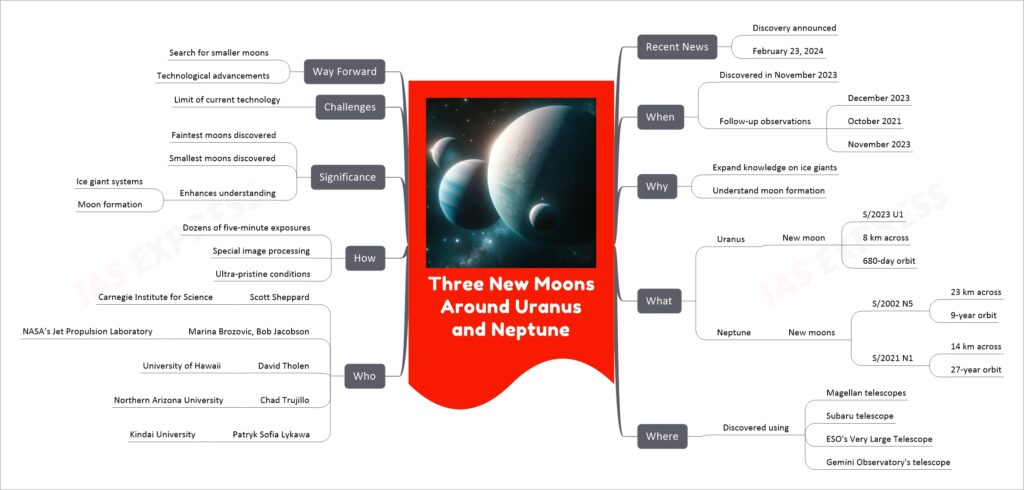Three New Moons Around Uranus and Neptune

Astronomers have recently unveiled the discovery of three new moons orbiting the ice giants Uranus and Neptune. This significant finding, announced on February 23, 2024, includes one moon around Uranus and two around Neptune. The discovery was made using a series of detailed observations and advanced image processing techniques. The newly discovered Uranian moon, provisionally named S/2023 U1, is about 8 kilometers across and completes an orbit every 680 days. Neptune’s moons, designated S/2002 N5 and S/2021 N1, measure approximately 23 and 14 kilometers in diameter, respectively, with orbits lasting about 9 and 27 years. This discovery was made possible through the collaborative efforts of astronomers using some of the world’s most powerful telescopes, including the Magellan telescopes at Carnegie Science’s Las Campanas Observatory, the Subaru telescope, the European Southern Observatory’s Very Large Telescope, and the Gemini Observatory’s telescope. These celestial additions to Uranus and Neptune’s moon families enhance our understanding of the outer solar system’s dynamics and the complex processes that govern moon formation.

